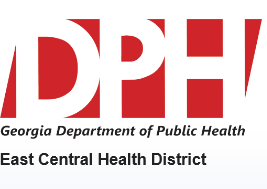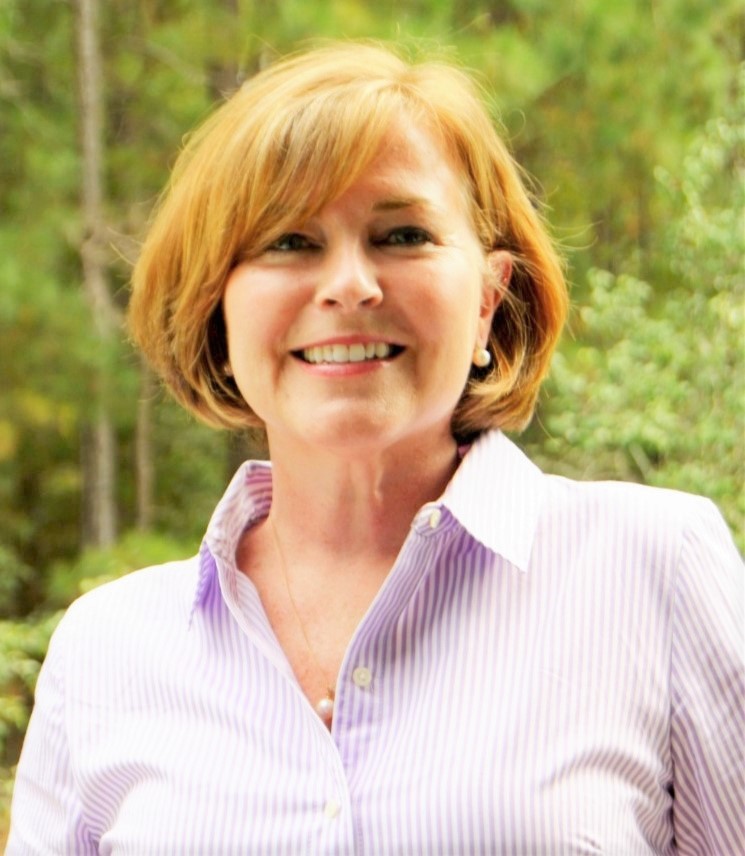The most important step that you can take to increase your preparedness for any disaster is to prepare a Disaster Plan. This means that you and all the members of your household should address the topics listed below. Once all of the components are dealt with, you have a Disaster Plan. It is very important that everyone in your home, including children, understand your plan
Click any of these topics for more information.
- Have you done some basic research?
- Do you have emergency or extra cash on hand?
- Do you have a Disaster Supply Kit?
- Do you have an Evacuation Plan?
- Do you have a Communication Plan and a backup plan?
- Have you checked your Homeowners or Renters Insurance?
- How do I know if I qualify for special needs population shelters?
- Don’t forget!
- Additional information
Have you done some basic research?
Investigate the types of hazards present in your community. Contact your local Office of Emergency Management for this information. If you live in Augusta-Richmond county, these hazards include hurricanes or tropical storms, floods, high winds, tornadoes, wildfires, acts of terrorism, hazardous materials disasters, radiological emergencies, civil disturbances, and others.
Do you have emergency or extra cash on hand?
Have extra cash on hand. ATMs may be down and stores may not accept credit cards for some time after an emergency.
Do you have a Disaster Supply Kit?
Preparing your disaster supply kit now will make your life much easier when an emergency, any emergency, occurs. You want to plan on supplies for 3-14 days and keep your supplies in a back-pack, duffel bag, suitcase, or other easy to carry storage device.
Here’s what you’ll need:
– WATER!! This is a top priority. Store at least one gallon per person per day. Remember, in addition to drinking, you’ll need to brush your teeth, wash your hands, and perform other hygiene activities—and it can get pretty hot in Georgia during summer months—so make sure you store enough water.
– FLASHLIGHT/LIGHT SOURCE – This should be kept on the TOP of your Disaster Supply Kit so you can find it as soon as you open the top!
– FOOD
__ canned meats
__ canned soups
__ canned juices
__ canned fruits
__ canned vegetables
__ Boxed drinks or other foods.
__ Powdered drinks
__ Instant coffee and/or tea
__ Peanut butter and jelly
__ Crackers, cookies, & candy
__ Energy and granola bars.
__ Bread in moisture proof containers.
– CAN OPENER (manual, NOT electric).
– BATTERY POWERED FLASHLIGHTS
– BATTERY POWERED RADIO
– EXTRA BATTERIES
– FIRST AID KIT
Make sure it has the following items:
__ First Aid manual,
__ Sterile bandages in assorted sizes.
__ Antiseptics, such as hand cleaners antibiotic ointment, products like Neosporin.
__ Tweezers
__ Scissors
__ Needle
__ Latex gloves
__ Sterile gauze pads
__ Roller bandages,
__ Assorted sizes safety Pins
__ Triangular bandages
__ Thermometer
__ Sunscreen
__ Hypoallergenic adhesive tape
__ Cortisone cream for bug bites, and itching areas.
__ Burn cream
__ Non-prescription pain relievers (such as ibuprofin or acetaminophen—Advil or Tylenol)
__ Non-prescription antihistamine (such as diphenhyramine)
__ Prescription medicines (discuss with your doctor to obtain these prescriptions as well as rotation requirements)
– EYE GLASSES or contact lenses. (If you use contact lenses, remember that they’re not much use without the solution and the storage case.)
– TOOLS -For basic repairs during the disaster recovery or until help arrives.
– IMPORTANT PAPERS, including proof of residence (in water tight containers).
– At least two complete changes of clothing. Don’t forget:
__ Footwear, work boots, etc..
__ Seasonal protective clothing
__ Ensure that kids clothes are checked for proper fit.
– Entertainment items, especially if you have children.
– PET SUPPLIES
__ Water. More water is needed for your pet!
__ Pet food
__ Veterinarian medicine for your pets
– DUCT TAPE, SCISSORS AND PLASTIC SHEETING
– A-B-C rated fire extinguisher Cooking supplies Personal hygiene items Bedding (Sleeping bags, pads, pillows, etc…)
– STATIONARY ITEMS (pens, markers, paper)
– BABY ITEMS
– ANTIBACTERIAL SOAP
– ANTISEPTIC WIPES
– TOOTHBRUSHY and toothpaste
– FEMININE and personal hygiene products
– TOILET PAPER
Inspect your kit at least twice a year; rotate the food at least every six months.
Your kit planning may include supplies for houseguests or others that make seek refuge or shelter in your home.
You should also keep basic versions of this kit in each car and at your work place.
Do you have an Evacuation Plan?
If you need help with your day-to-day activities, look into the Augusta-Richmond County Emergency Evacuation Assistance Program and apply to the special needs registry. It is very important that you register now and not wait until a disaster is imminent.
Identify two different escape routes out of each room of your house.
Make sure everyone, including children, is familiar with these routes.
Find out if you live in an evacuation zone for various hazards (hurricanes, radiological emergencies). If you do, look at a map and identify two different routes out of your neighborhood.
Know where you are going. Make arrangements ahead of time with your family or friends who live out of the area. As a last resort, you may also choose to go to an Evacuation Center.
Make sure that your Disaster Kit has already been assembled and don’t forget to bring it with you.
Remember that most hotels and evacuation shelters do not permit pets (except for pets assisting people with special needs, such as seeing eye dogs), so be sure to have a place to where your pets can evacuate as well.
If you evacuate, be ready to leave as soon as the evacuation order is given. If you wait too long, not only are you putting yourself and your family at risk, but you are more likely to encounter traffic and other obstructions.
If you do not live in an evacuation zone, you will have to shelter-in-place.
For additional information on sheltering, please click the Other Helpful Links on the left side of this page.
Do you have a Communication Plan and a backup plan?
Ensure that all household and or family members have a current listing of emergency contact numbers, names, and addresses.
Identify two different places for your family to meet in case you are separated during an emergency. One should be right outside of your house, like a tree, and the other should be outside of your immediate neighborhood, such as a store or place of worship.
Local telephone lines (including cells and pagers)may be down or overwhelmed, so choose a contact who lives out of the area for you to call and report that you are OK as a backup.
Don’t rely on the internet if the lines are down- they may be too.
Talk with your employer and your children’s school or day care facility about their disaster plans.
Out of area friends and relatives should also call this person to find out how you are doing.
Have you checked your Homeowners or Renters Insurance?
Review your insurance policies, make sure that you understand them, and make sure that you have sufficient coverage. You should do this now and not wait until the disaster is imminent—you may not be able to make changes at that time. Some specifics:
Windstorm: Make sure that your policy covers windstorms. Some home owners and renters policies may not.
Flood Insurance: The National Flood Insurance Program is the only underwriter for flood damage to real property or personal effects. You will need to have a separate flood insurance policy written in addition to your homeowners or renters policy. Be advised that there is a 30 day waiting period to get flood insurance, so you’ll have to secure the policy in advance of the hurricane season. Your insurance carrier can do this for you, or you can call the National Flood Insurance Program directly at 800-638-6620.
Replacement Coverage: As soon as you purchase something and take it home it begins to depreciate including appliances, computers, sound equipment, and other major purchases. When you make an insurance claim, your adjuster will count the depreciation on the item and you may not get the amount you need to replace the item completely. Make sure that your personal belongings have replacement coverage that will take a market price for the item in order to replace it in full.
Deductibles: Review your policy for deductibles, and other exclusions so you know what you can expect to have to pay for out of pocket. Some Federal disaster loan programs may be available to cover those deductibles.
Temporary Living Expenses: Renters and homeowners should take out policies that will provide them funds for temporary living expenses (or loss of use), which you may need if your residence becomes inhabitable.
Before and After Photos: Take photos of your residence both inside and out. Make sure you get clear photos of each room of the house that show the appliances and furniture in each. Take photos of your personal belongings that may require special insurance coverage. Make two copies of the pictures, one for you and one for the insurance adjuster. Once the storm has passed, take the same series of pictures.
How do I know if I qualify for special needs population shelters?
People with special needs may need extra assistance. If you know someone with special needs, don’t forget about them during an emergency—they may need your help. Examples of special needs include, but are not limited to those who are:
1. Oxygen dependent
2. Require kidney dialysis
3. Electrically-dependent
4. Wheelchair dependent
5. Need assistance with essential activities of daily living
For more information, call 706-667-4326.
Don’t forget!
Make sure that everyone in your household knows how to turn off the electricity, gas, and the water. Make sure that everyone in your household knows each other’s contact numbers (home, work, mobile, pager) and how to reach your out of area contact.
Bring a copy of your insurance cards, immunization records, list of medications, birth certificates, Social Security Card, children’s report cards, WIC vouchers, Food Stamps, extra cash and any other personal documents. Remember to fill your vehicle with gas as soon as you know you may evacuate.
There may be other factors in your life that require specialized emergency planning. Please review the links for disaster preparedness, terrorism preparedness, and other hazards, for additional information.
Additional information
Additional information is available at:
FEMA – Federal Emergency Management Agency
OHS – U.S. Department of Homeland Security
CDC – Center for Desease Control and Prevention
NOAA – National Oceanic & Atmospheric Administration
GOHS – Georgia Office of Homeland Security
GEMA – Georgia Emergency Management Agency
GHA – Georgia Hospital Association
GA DPH EMERGENCY PREPAREDNESS – Georgia Department of Public Health






